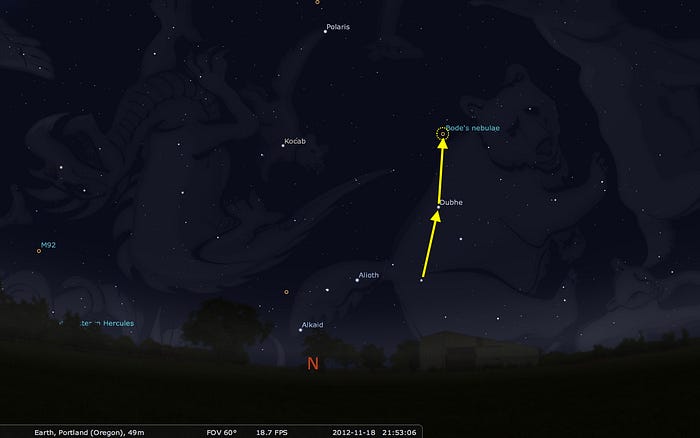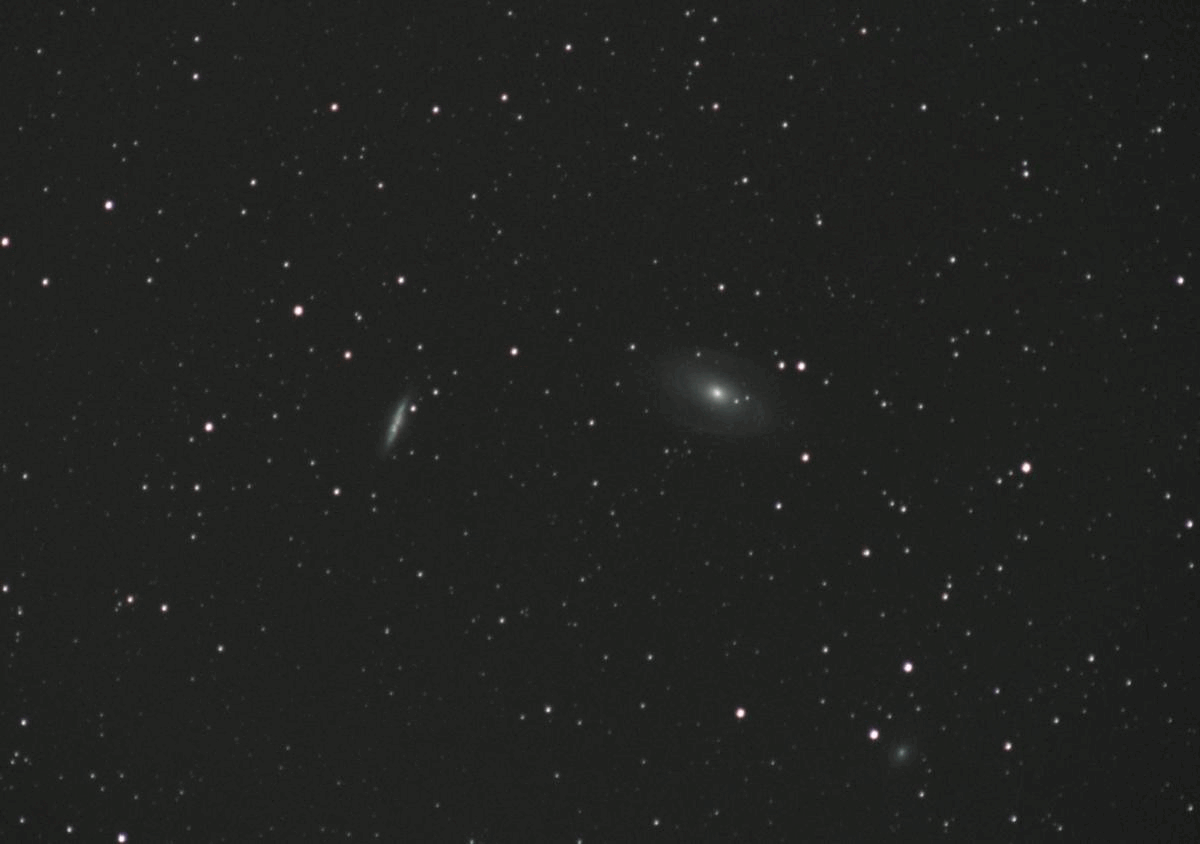Imagine setting off on a spacecraft that can travel at the speed of light. You won’t get far. Even making it to the other side of the Milky Way would take 100,000 years. It is another 2.5 million years to Andromeda, our nearest galactic neighbor. And there are some 2 trillion galaxies beyond that.
The vastness of the cosmos defies comprehension. And yet, at the fundamental level, it is made of tiny particles.”It is a bit of a foreign country – both the small and the very big,” says particle physicist Alan Barr at the University of Oxford. “I don’t think you ever really understand it, you just get used to it.”
Still, you need to have some grasp of scale to have any chance of
appreciating how reality works. READ MORE...
Showing posts with label Andromeda. Show all posts
Showing posts with label Andromeda. Show all posts
Tuesday, May 28
Friday, June 24
Backyard Photography of Galaxyk
In the summer of 2020, the world was enthralled with the Comet Neowise, which only makes an appearance every 6,800 years. Brennan Gilmore was so enthralled that it kicked off a passion for astrophotography that continues today.
Two years after beginning his journey photographing the stars, he has accomplished a major goal: photographing the Andromeda galaxy.
Our neighbor in the sky, Andromeda is a spiral galaxy similar to our own Milky Way. Sitting 2.5 million light-years away, it remains a bright spot in the atmosphere and was something that Gilmore first photographed two years ago.
Our neighbor in the sky, Andromeda is a spiral galaxy similar to our own Milky Way. Sitting 2.5 million light-years away, it remains a bright spot in the atmosphere and was something that Gilmore first photographed two years ago.
However, it took him some time to build up the skills and acquire the equipment to achieve an image he was happy with. The final result was well worth the wait, as the image went viral after he posted it online and even ended up in Newsweek.
Gilmore captured the stunning image from his backyard in Charlottesville, Virginia, over the course of several nights. Using a four-inch telescope and astronomy camera, he took hundreds of photos of Andromeda.
Gilmore captured the stunning image from his backyard in Charlottesville, Virginia, over the course of several nights. Using a four-inch telescope and astronomy camera, he took hundreds of photos of Andromeda.
From there, he carefully culled his images, using only the very best for the final photograph.
In the end, all of his efforts paid off. The final photo, created from 290 individual frames, is incredibly detailed. Many of Andromeda's one trillion stars are visible through its gas halo.
In the end, all of his efforts paid off. The final photo, created from 290 individual frames, is incredibly detailed. Many of Andromeda's one trillion stars are visible through its gas halo.
Gilmore thought of every detail, including the exposure so that even the core of the galaxy isn't overexposed. This allows viewers to drink in the stars and ponder on this far away neighbor, which is actually headed toward our own galaxy. READ MORE...
Tuesday, March 8
A Spectacular Universe
Just 12 million light-years away, the galaxies Messier 81 and 82 offer a nearby preview of the Milky Way-Andromeda merger.
Right in our cosmic backyard, a preview of the Milky Way’s future unfolds.
 The galaxy Messier 81, also known as Bode’s Galaxy, is one of the brightest and closest galaxies to Earth not found in our Local Group. By connectng the lower-left corner of the Big Dipper’s cup to the upper-right corner and then traveling that same distance in the same direction, you can find M81 and the other major galaxies of its group all clustered together. (Credit: E. Siegel/Stellarium)
The galaxy Messier 81, also known as Bode’s Galaxy, is one of the brightest and closest galaxies to Earth not found in our Local Group. By connectng the lower-left corner of the Big Dipper’s cup to the upper-right corner and then traveling that same distance in the same direction, you can find M81 and the other major galaxies of its group all clustered together. (Credit: E. Siegel/Stellarium)Just outside the Big Dipper’s “cup,” Bode’s Galaxy, Messier 81, lingers.
 This optical image of Bode’s Galaxy, M81, comes courtesy of the Hubble Space Telescope. The spiral arms are littered with hot, young, blue stars, while large extent of the arms indicates a gravitational interaction with one or more nearby neighbors. A wider-field and multiwavelength view supports that. (Credit: NASA, ESA and the Hubble Heritage Team (STScI/AURA))
This optical image of Bode’s Galaxy, M81, comes courtesy of the Hubble Space Telescope. The spiral arms are littered with hot, young, blue stars, while large extent of the arms indicates a gravitational interaction with one or more nearby neighbors. A wider-field and multiwavelength view supports that. (Credit: NASA, ESA and the Hubble Heritage Team (STScI/AURA))12 million light-years away, it’s a naked eye object for those with acute vision and exceptionally dark skies.
 The two largest, brightest galaxies in the M81 Group, M81 (right) and M82 (left), are shown in the same frame in these 2013 and 2014 photos. In 2014, M82 experienced a supernova, visible in the 2014 (blue) image just above the galactic center. (Credit: Simon in the Lakes)
The two largest, brightest galaxies in the M81 Group, M81 (right) and M82 (left), are shown in the same frame in these 2013 and 2014 photos. In 2014, M82 experienced a supernova, visible in the 2014 (blue) image just above the galactic center. (Credit: Simon in the Lakes)The largest galaxy in the M81 group moves ever-so-slightly towards us. READ MORE...
Friday, April 23
A Dying Galaxy
From the smallest microbe to the mightiest oak, death is as true for above as it is for below, even for the mightiest galaxies.
The process, however, is not a quick one. A haunting new Hubble photo of the galaxy NGC 1947 demonstrates this well: Even from a distance of around 45.4 million light-years away (in the southern constellation of Dorado), we can see that the galaxy is slowly on the decline.
The clue lies in the dust and gas. A galaxy in the prime of its life will be filled with the stuff, using it to make new stars. Eventually, the star-stuff will run out, and that's what astronomers believe we are seeing with NGC 1947.
It's a rare type of galaxy known as a lenticular galaxy - disk-shaped, like the Milky Way or Andromeda, but without the spiral arms. NGC 1947 used to have spiral arms, but it has used up almost all the gas and dust that gave them structure; all that remains is a few wisps, backlit by starlight. Read More
The process, however, is not a quick one. A haunting new Hubble photo of the galaxy NGC 1947 demonstrates this well: Even from a distance of around 45.4 million light-years away (in the southern constellation of Dorado), we can see that the galaxy is slowly on the decline.
The clue lies in the dust and gas. A galaxy in the prime of its life will be filled with the stuff, using it to make new stars. Eventually, the star-stuff will run out, and that's what astronomers believe we are seeing with NGC 1947.
It's a rare type of galaxy known as a lenticular galaxy - disk-shaped, like the Milky Way or Andromeda, but without the spiral arms. NGC 1947 used to have spiral arms, but it has used up almost all the gas and dust that gave them structure; all that remains is a few wisps, backlit by starlight. Read More
Subscribe to:
Comments (Atom)



